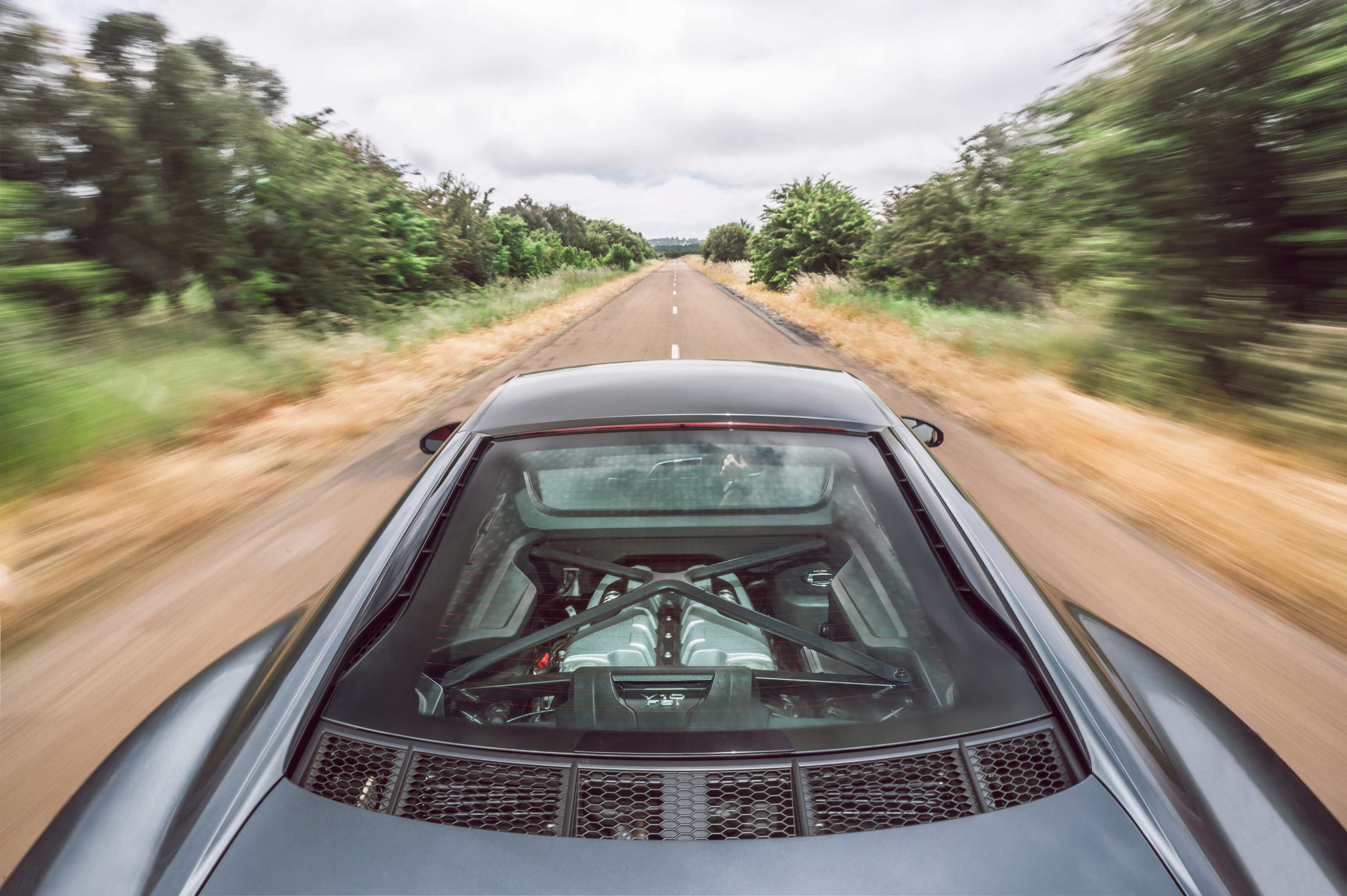With an almighty thunk that cannons through the entire skeleton of the ship, the Spirit of Tasmania drops its jaw onto the dock at Strachan, on the Apple Isle’s west coast. A few hundred cars and a dozen bikes sit idling in the bowels, waiting for the signal from the deckhand to roll out. The year is 2009, and I’m in a manual Audi R8, watching the temperature gauge of the mid-mounted 4.2-litre dry-sumped V8 start to climb into the operating zone.
A steady drip-feed of adrenaline leeches around my bloodstream as the deck hand, who looks like a young Clint Eastwood, waves me through. It’s a cheery wave; so much nicer than being shot in the head with a 44 Magnum.
I have plenty of time for the 300km drive to meet the rest of the Wheels team in Hobart for our V8 celebration, but I’m not about to let a trivial detail like that intrude. No, given the early hour and scarcity of traffic on these epic roads, it would seem churlish not to drive like my underpants are on fire, and the extinguisher is on the other side of the island.
What follows is a drive that sits easily lodged in my top 10; an indulgent gorging on that willing, free-spinning V8, continually urging it to lunge for its 8000rpm redline; the precise clack of a manual stick into its beautifully defined open gates, and revelling in the balanced, resolved chassis, supple enough to deal with road surfaces ranging from sublime to ridiculous.
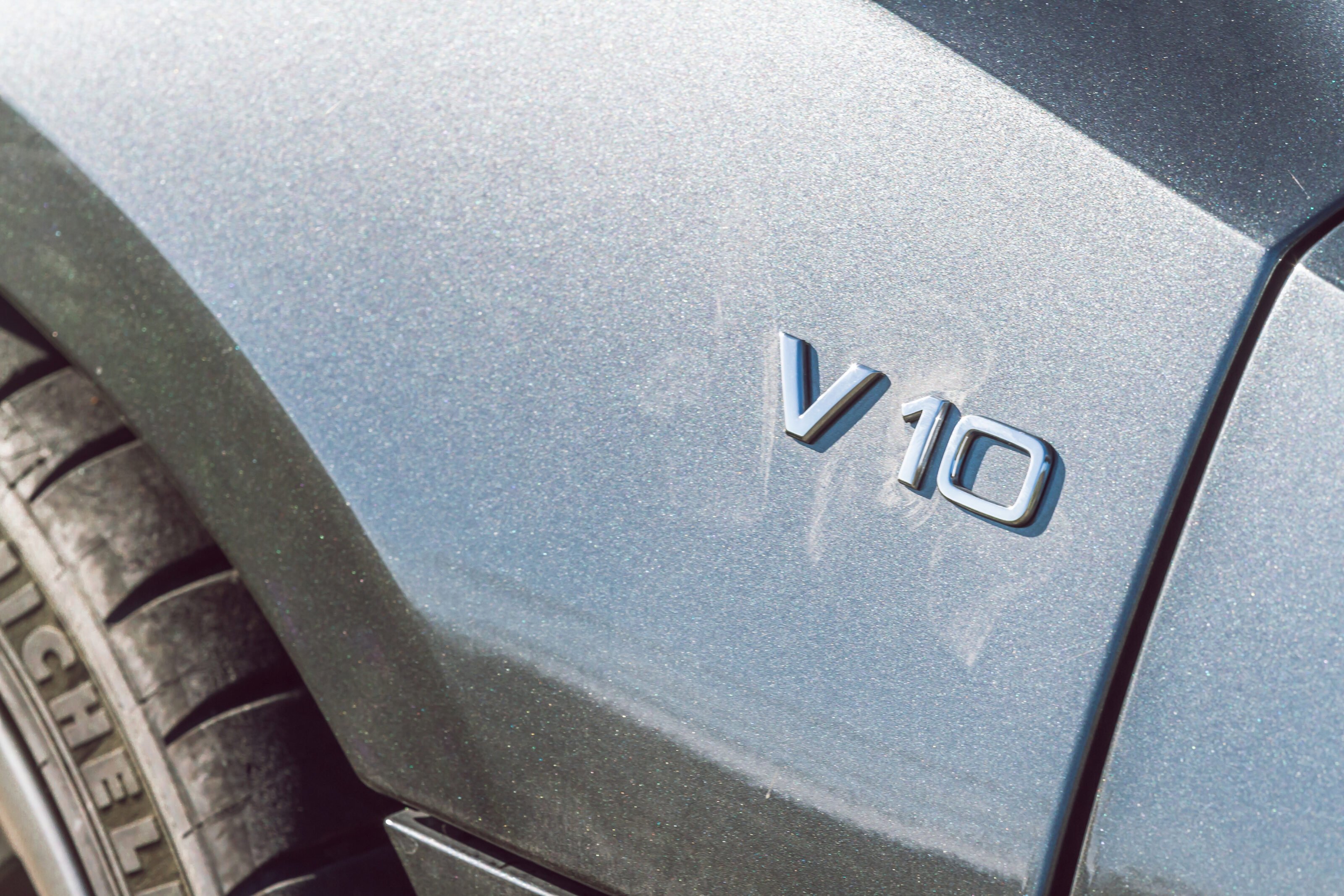
It was a transcendent experience, one of the rare times where you, the car and the environment mesh perfectly to allow a Marie Kondo-style decluttering of the mind, leaving you absorbed purely in the euphoria of driving. I didn’t even lift when I passed a couple snuggled together in a parked Mazda 3 on the side of the road outside Burney, who I reckon were most definitely cousins.
That epic blast gave me an appreciation and affection for the R8 that hasn’t faded over a decade on. I’ve had several awesome drives in that car’s successors, including the V10 Performance in our Atmo Heroes feature (Wheels, September 2019) and the V10 Spyder on awesome roads on Spain’s Costa De Sol at that car’s launch. The R8, no matter what spec, is always an ‘event’ car. But now, as the current generation car ticks past four years on sale in Australia and the global emissions noose tightens on all car makers, the question hangs over it: Where to from here?
The term ‘halo car’ gets flung around plenty these days, but it was never more apt than when applied to the original R8 and the impact it had on the broader perception of Audi. The TT may have brought design attention to the four-ringed brand in the late ’90s, but the debut of the R8 in 2006 was the punctuation point that passion and performance belonged as the pinnacle of the company’s line-up.
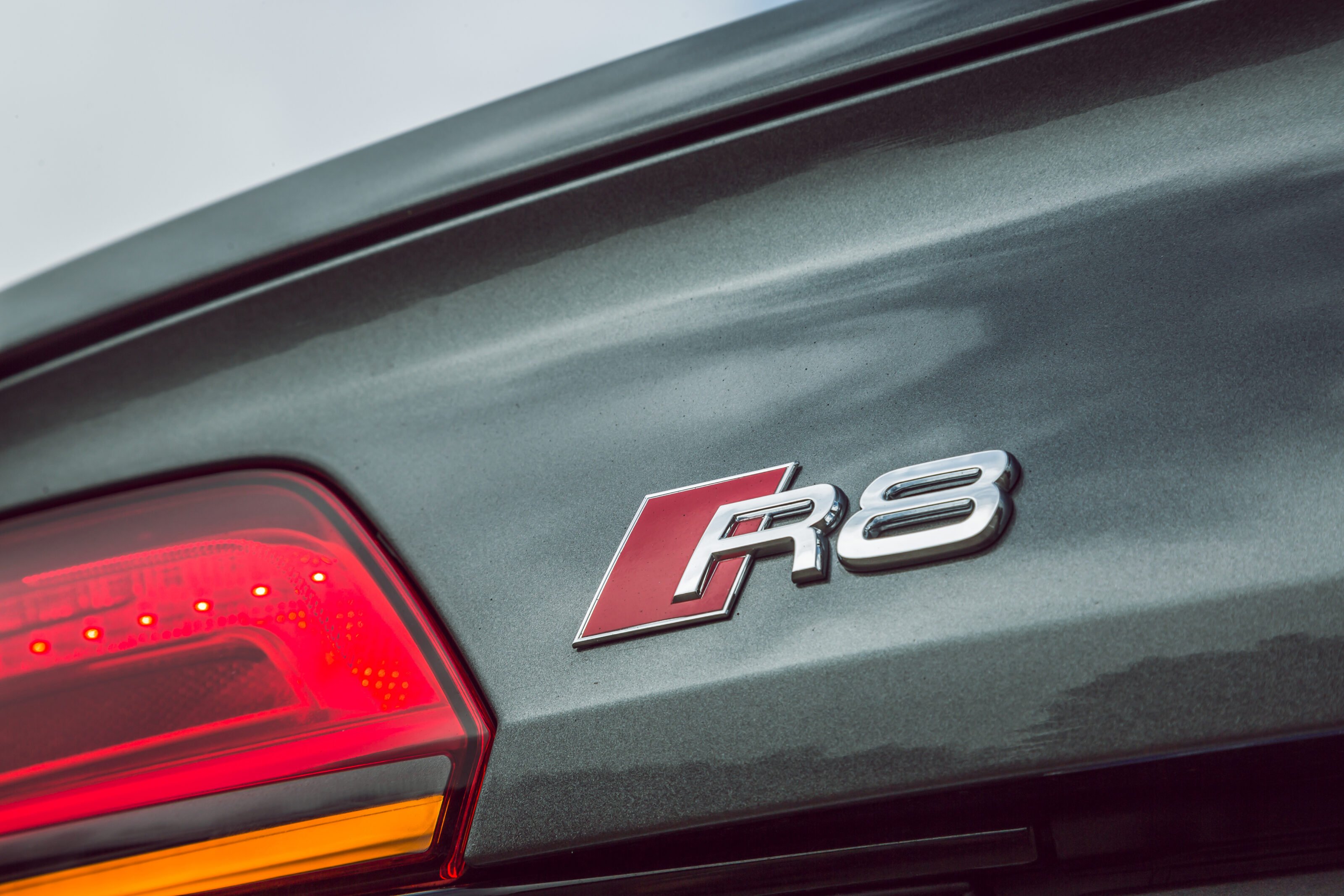
Not just that, in many ways the first-gen R8 took the mid-engine sports car, well, almost mainstream. Before the arrival of the V10, the V8-powered R8 was a price and performance rival for the 997-generation 911, yet way more exotic. Its conceptual forebear, the RSQ, made kids lose their minds when it appeared in the 2004 sci-fi thriller iRobot, and when the V10 did arrive locally in 2009, the R8 was suddenly a bona-fide supercar. Oh, and one without its minor controls seemingly placed by a spud gun, unlike the Lambo Gallardo.
But now, as the second-generation R8 moves into the twilight phase of its life and speculation increases about what will replace it, we figured it needed a send-off drive to serve as a raised glass; a 10-cannon salute for what has evolved into one of the last great mid-engined atmo heroes.
So, as the pre-dawn sun struggles to cast a weak glow over his neighbour’s rooftops, snapper Wielecki and I thread ourselves into the ultra-snug, legs-ahead cockpit and share non-COVID-approved shoulder contact. We have only a day, so figure we’ll head south-west to Goulburn for a late breakfast, then fire up Taralga Road to get to Lithgow in the early afternoon, and later aim for the epic roads that flank the UNESCO-listed Jenolan Caves.
By the time it’s dark, I’ll be hungry and cranky and Wielecki will be still saying “just one more shot!” and I’ll be ready to punch him in the throat, but that’s how it always goes.
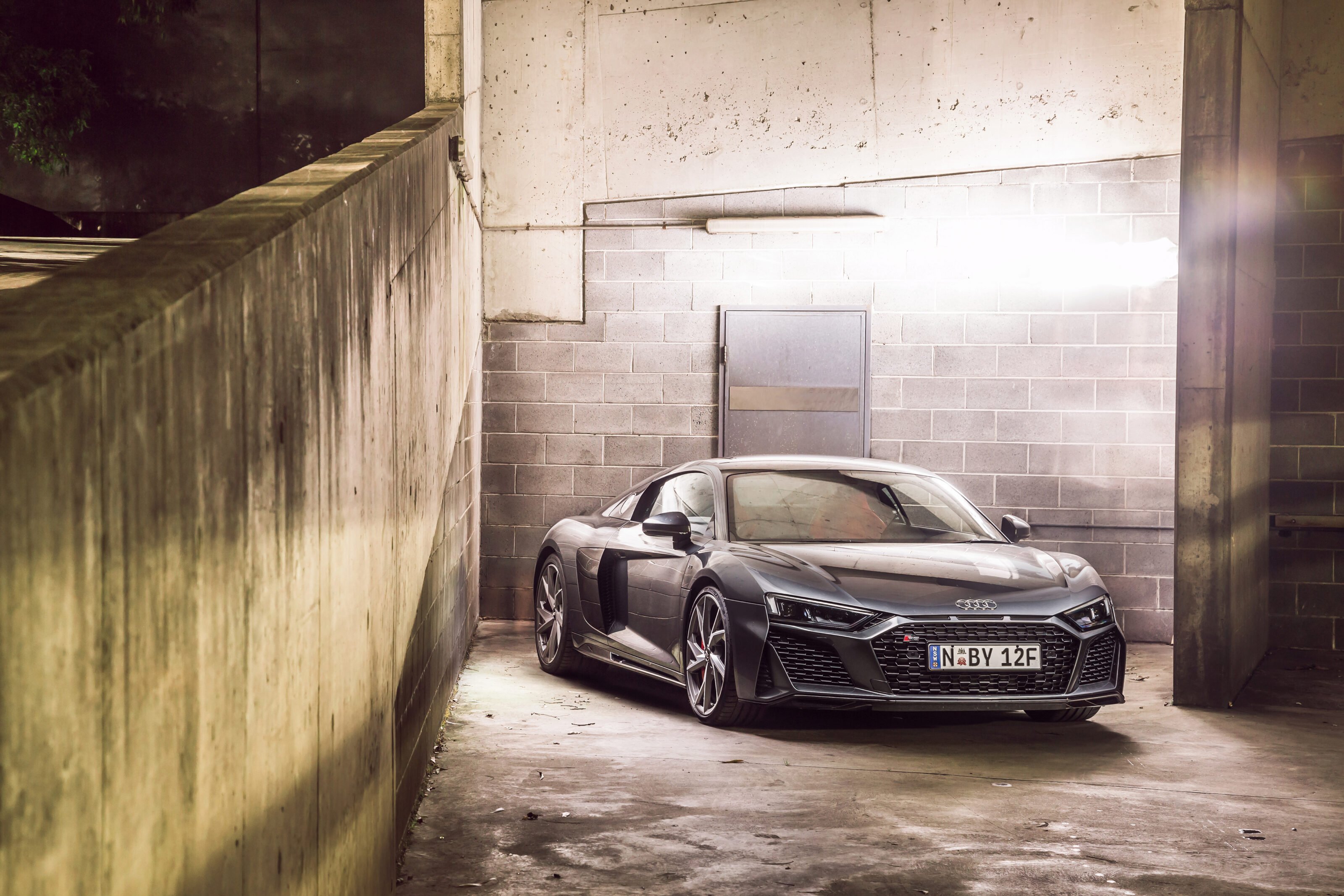
Before we leave, though, Wielecki’s 10-year-old son Enzo is hopping around like he’s been on the red-cordial breakfast of champions, demanding at least one decent throttle stab to hear that V10 clear its throat. His excitement somehow captures everything that’s awesome about supercars; the latent promise of aggression, danger and the thrills they exude just sitting static, and how they can suddenly vocalise all that with one decent prod of the throttle.
Of course I oblige, and his little face crinkles with a mix of shock and delight as the V10’s rabid bark explodes out of the fist-sized tailpipes, splitting the early-morning air like a cleaver. When the R8 eventually goes electric (more on that later) will young kids still be as transfixed? Or will the lack of combustion fury neuter a core part of the spectacle?
Thankfully I have other things to distract me from this question, like digging around in the drive modes to soften the dampers and relax the ultra-taut ride. The Individual setting allows me to alter the engine and transmission calibration, and the steering weight, and the exhaust note, but no evidence of damper adjustment. It then sinks in that this rear-drive variant is sold with fixed-rate dampers only, so the unforgiving chassis tune is the only one on offer.
Okay then.
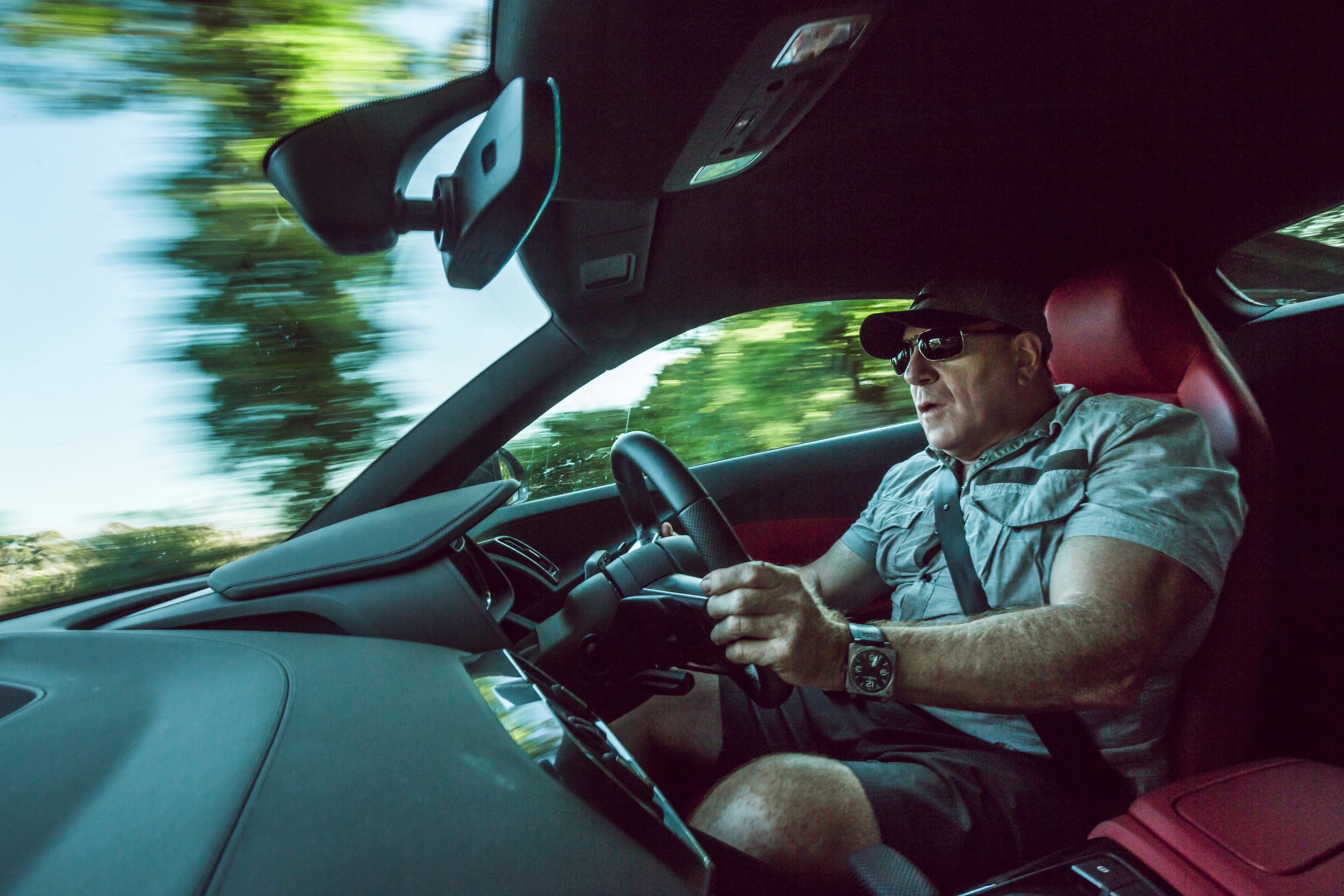
Only the Performance variants (coupe and Spyder) get adaptive dampers, along with carbon-ceramic brakes, fixed bucket seats, a higher output tune for the 5.2-litre V10 and of course all-wheel drive. Both body styles of the higher-grade cars each add a neat $100,000 to the tab, which suddenly makes the $295,000 charged for our RWD coupe seem, at least in the realm of supercars, not insane.
You would never call the 75-degree 5.2-litre V10 underdone in this spec, even though it’s actually the tamest iteration of the engine available. See, we can’t talk R8s and V10s without mention of this car’s brother from another mother, the Lamborghini Huracan. Both cars share their spaceframe constructions, which are built from a mix of aluminium and carbonfibre at the same facility in Heilbronn, Germany.
Their V10s share fundamental architecture too, even though they’re built at different engine plants. Our car here makes 397kW and 540Nm, which bump up to 456kW and 580Nm in the Performance variants. Solid numbers, but still short of what this engine can make with that frisky-bull badge attached: currently, the hottest Lambo tune sees the V10 wailing out 470kW and 600Nm, so you do have to accept a little bit of sandbagging when plumping for the ‘budget’ Audi.
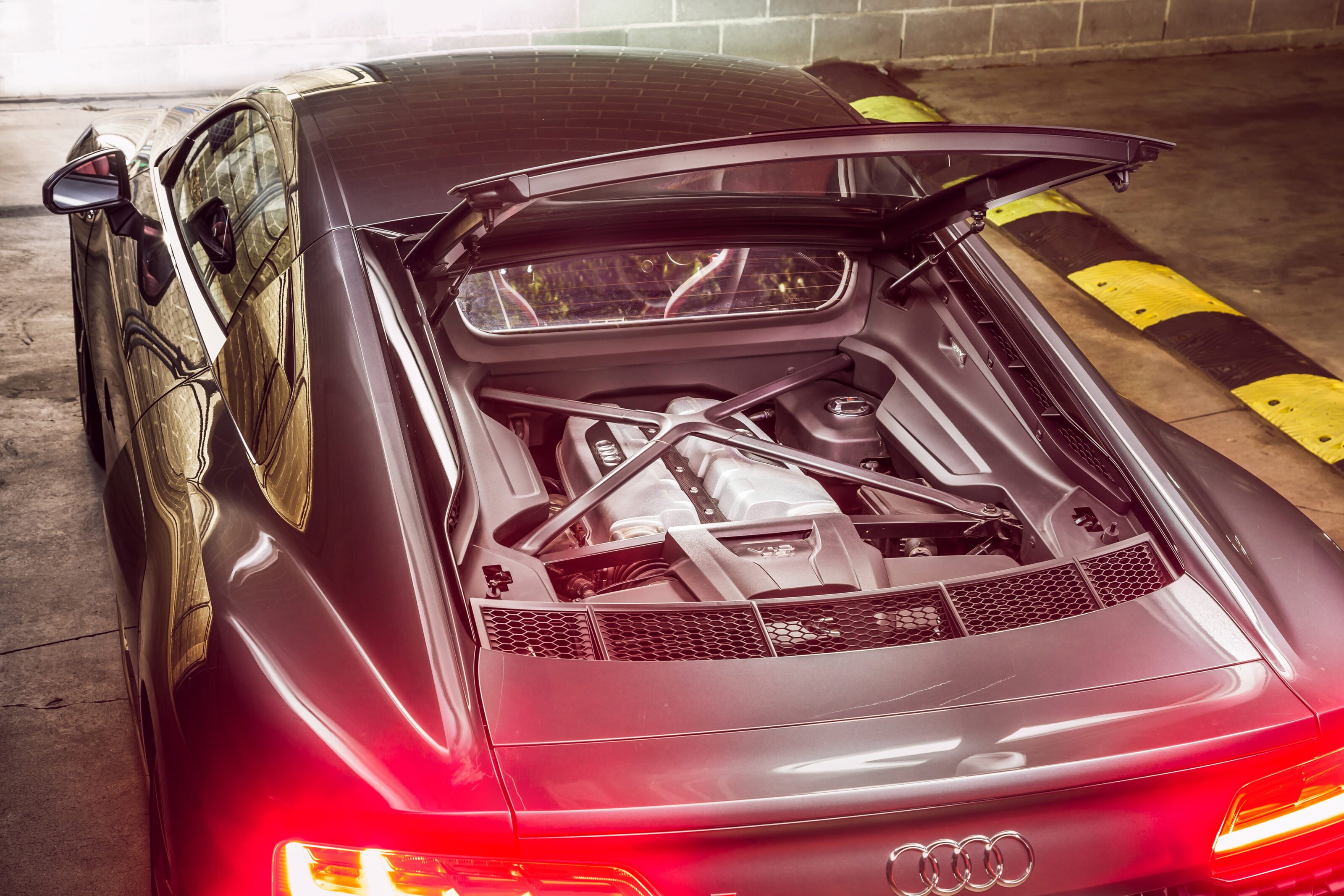
As we cruise on the expressway towards Goulburn, power feels, well, ample, and the smarts of the seven-speed dual-clutch transmission are exceptional on the move. It’s eager to relax the engine and use its torque on a light throttle, but almost instantly responds to a throttle prod or click of the paddles. Yet I still feel a brief yearning for the gated manual of the first-generation car. Not only did it give you that wonderful tactile connection to the gears, but the ability to add a bit of clutch slip to whip the engine up into the meat of the torque curve was a brilliant asset.
That six-speed manual and its alternative, the automated single-clutch seven-speeder, were both consigned to the bin when the major update of the first-gen car arrived in Oz in 2013, and no-one could argue that the dual-clutch was not the technically superior transmission. But the polite little clicks of the paddles do feel a bit like you’re interacting with a computer, rather than sending manly messages to a bunch of madly meshing cogs.
It’s all part of making the R8 the civilised supercar, I get that, but the tyre roar from the huge rear Michelins try to argue otherwise. They are crazily surface-dependent, transitioning from a muted monotone on hot mix to ajetliner-with-hole-in-the-floor rumble on coarse-chip. We attempt to drown them out with the excellent Bang & Olufsen sound system, but they’re a formidable aural opponent.
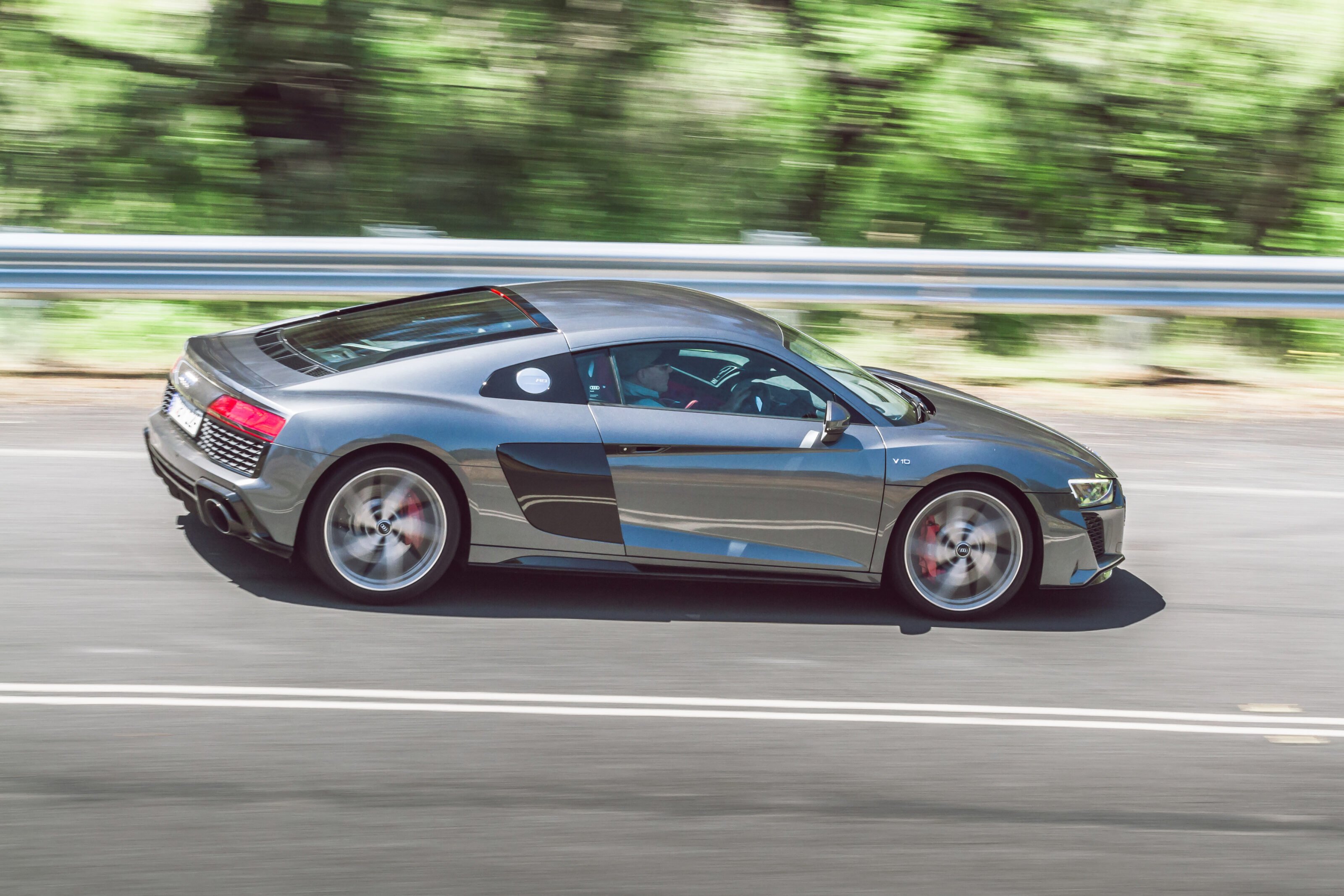
Boy, do those Michelins know how to cling on, though. Outside Goulburn, under an unblemished blue sky, I can really start to take the first exploratory sniffs of the grip on offer, and it really is colossal.
The steering is unburdened of dealing with torque output, unlike the AWD variants, and feels even more instantly incisive either side of centre than I remember in the last R8 I drove, that V10 Performance. It’s borderline too aggressive, demanding a very gentle input to avoid taking an excessive chunk of apex on these flowing roads. But there is proper front-end feel, something not universally gifted to fast Audis, so you’re never in doubt as to what’s happening down at surface level.
And if you just want to stay on the sane side of the rulebook, provided that surface is reasonably bump-free, you can rail around sweepers with barely a lift of the throttle, much less a brush of the brakes. But the damper tune… unfortunately it’s a classic case where one size doesn’t fit all. Start cranking up the pace, drawing on the vast reserves of the big-lunged V10, and hustling the car faster into bumpier bends sees it turning a bit skittish. You have to be really having a crack for it to turn into anything more than a fleeting moment of bum-pucker, but it does act as a bit of a confidence sapper.
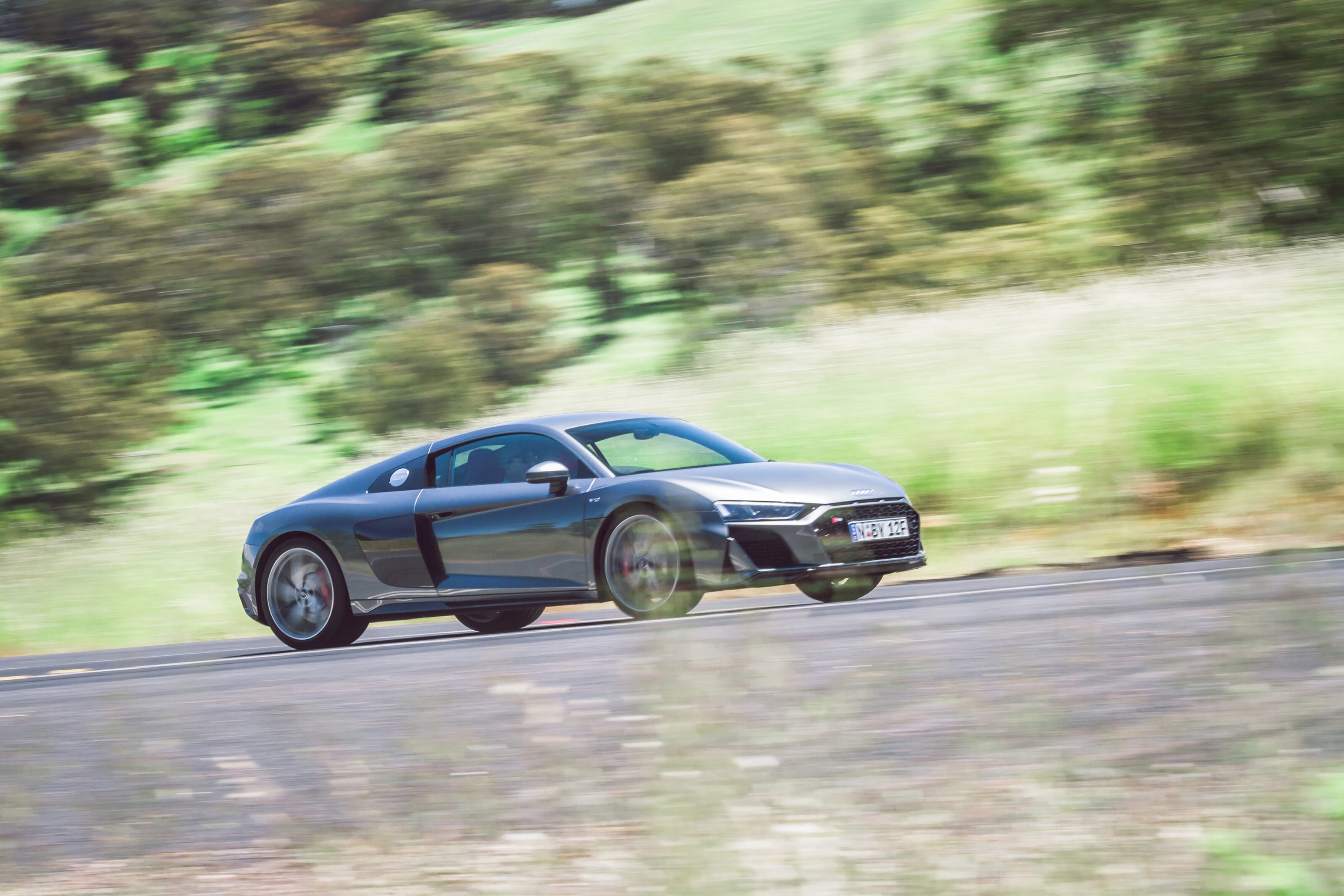
It’s becoming clear that an R8 in this guise – slightly down on power, driving the rear wheels only and navigating Aussie roads with only a short, firm stroke of its non-adjustable dampers – is somehow the brasher, more youthfully exuberant member of the line-up. It demands a committed but not overly aggro approach to coax out its best, otherwise it can feel a little spiky.
The arrival of the rear-drive R8 was a pivotal move for Audi, which had built so much of its USP and corporate identity around the whole ‘quattro’ thing. Is it purely coincidence that it occurred while Audi Sport (which heads up the R8 and RS models) was under the control of former Lamborghini boss Stephan Winkelmann?
The sharp-dressed CEO had overseen the introduction of the rear-drive Gallardo LP550-2 Balboni edition from 2009; you don’t have to join too many dots to figure he later saw an opportunity at Audi to ditch the inherent conservatism of front driveshafts and green-light a supercar to live a little on the RWD edge. Besides, racing regulations had seen the R8 LMS driving only the rears for some time; there was a degree of motorsport-inspired synergy in letting the road car follow suit.
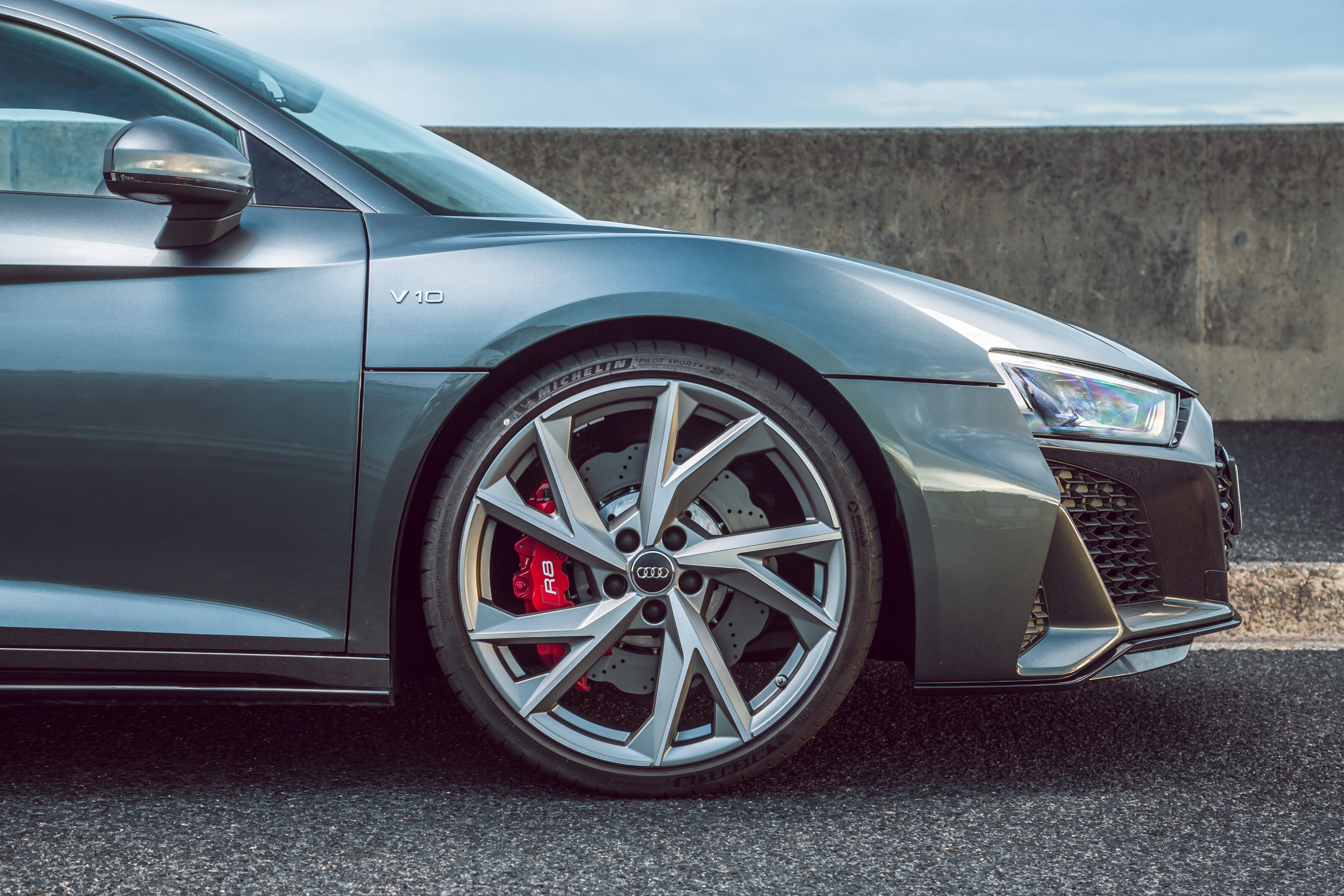
It does make the RWD coupe a livelier car, but how much of this is the damping and how much is lack of drive to the front wheels? Well, that I can’t really say. What I can attest is that, with the ESC in Sport mode, this is a car that really gets the synapses firing and the hairs on the back of your neck standing to attention. It insists that you’re ultra-precise with feeding the throttle back in just past the apex, but rewards with a clarity of feedback that really reminds you, not matter how good turbo engines get, this is the ‘vinyl’ of the internal combustion world.
And the sound of the V10 when worked through the rev range; Jeez-us. Okay, it doesn’t have the sonic purity of the litre-smaller V8 – it’s too busy being angrier and more verbose for that – instead it has more of a warble as it spins up, and as it scales the rev range, that with the exhaust open, just gets more open-lunged and quite outraged as it rips at the 8700rpm limiter.
It lacks the thuggish slug of turbo torque that rivals like McLaren and AMG deliver, but that’s all part of the joy. Here, the big V10 demands fuel and flame to keep properly percolating, so you focus on chasing revs to keep it fed, and revel in the noise and anger flooding out beyond 6000rpm.
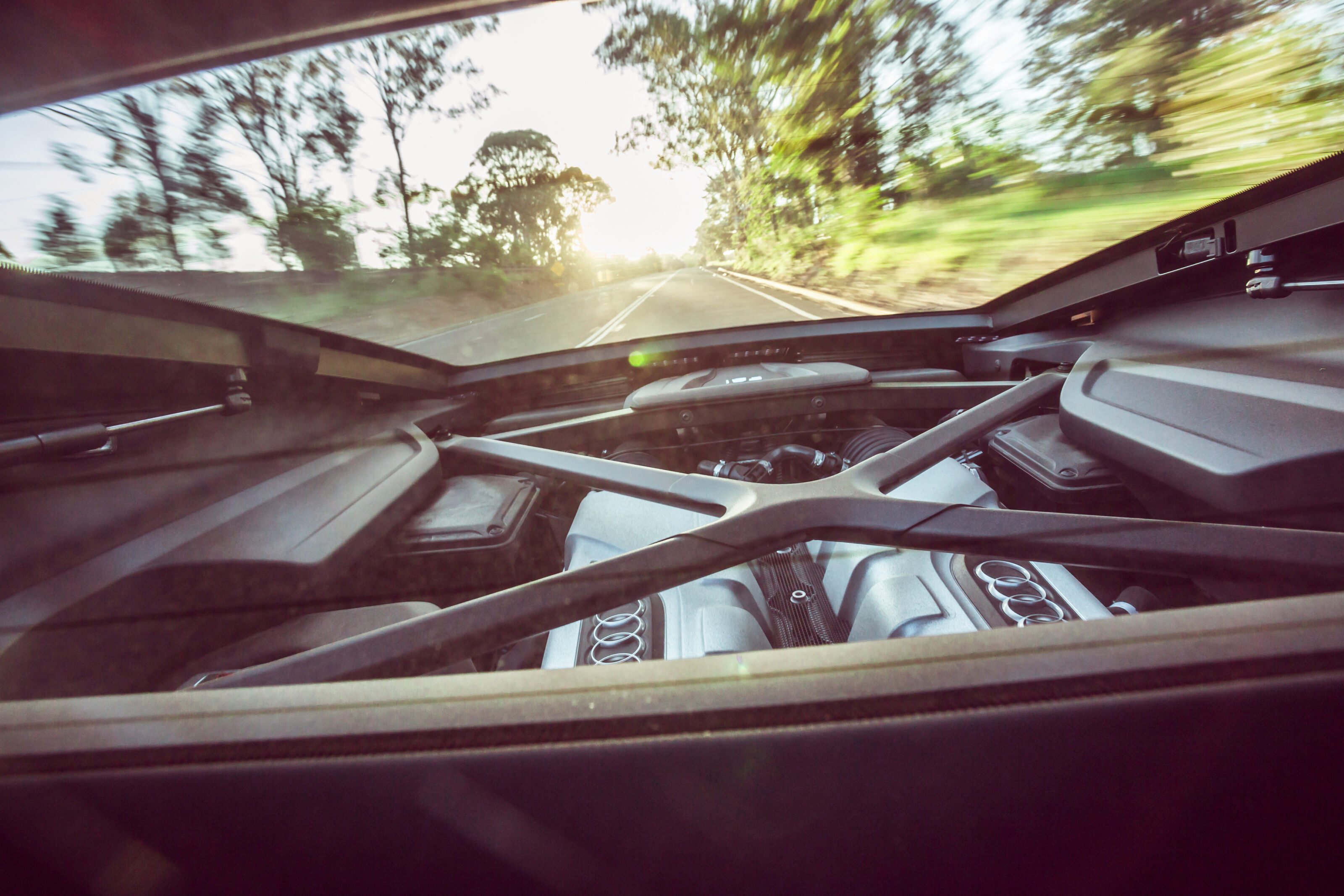
On the smoother surface of the Jenolan Caves Road near the Jenolan Mine, surrounded by lush fields of green and purple, it’s a proper scalpel, monstering the short straights, the hardwired throttle response letting you know exactly how much you can throw at the rear Michelins to keep them wedged in that window of slip and grip.
This has been a shorter time than I had with the original car in Tassie, and the mechanical interaction with the V10-powered car is quite different – a bit more more combative, less harmonious – but that same euphoria rises again.
Adding electric motors would no doubt make it even more ballistic, filling the midrange with monstrous torque, but would it make it more thrilling and satisfying to drive than this V10 iteration? The jury’s out on that one.
And that really is the big question hanging over this car. The first generation had a long life of nine years, but it seems unlikely this second-gen model will last anything like that. Already there are things that feel dated, like the lack of a dedicated multimedia screen (the rotary controller and accompanying keys operate a menu that appears in the dash) and the absence of lane-keeping or radar-based cruise control, missing because the electrical architecture doesn’t support it. There’s even a CD/DVD unit behind the centre console. If only I’d known, I could have brought my 2007 Triple J Hottest 100 disc.
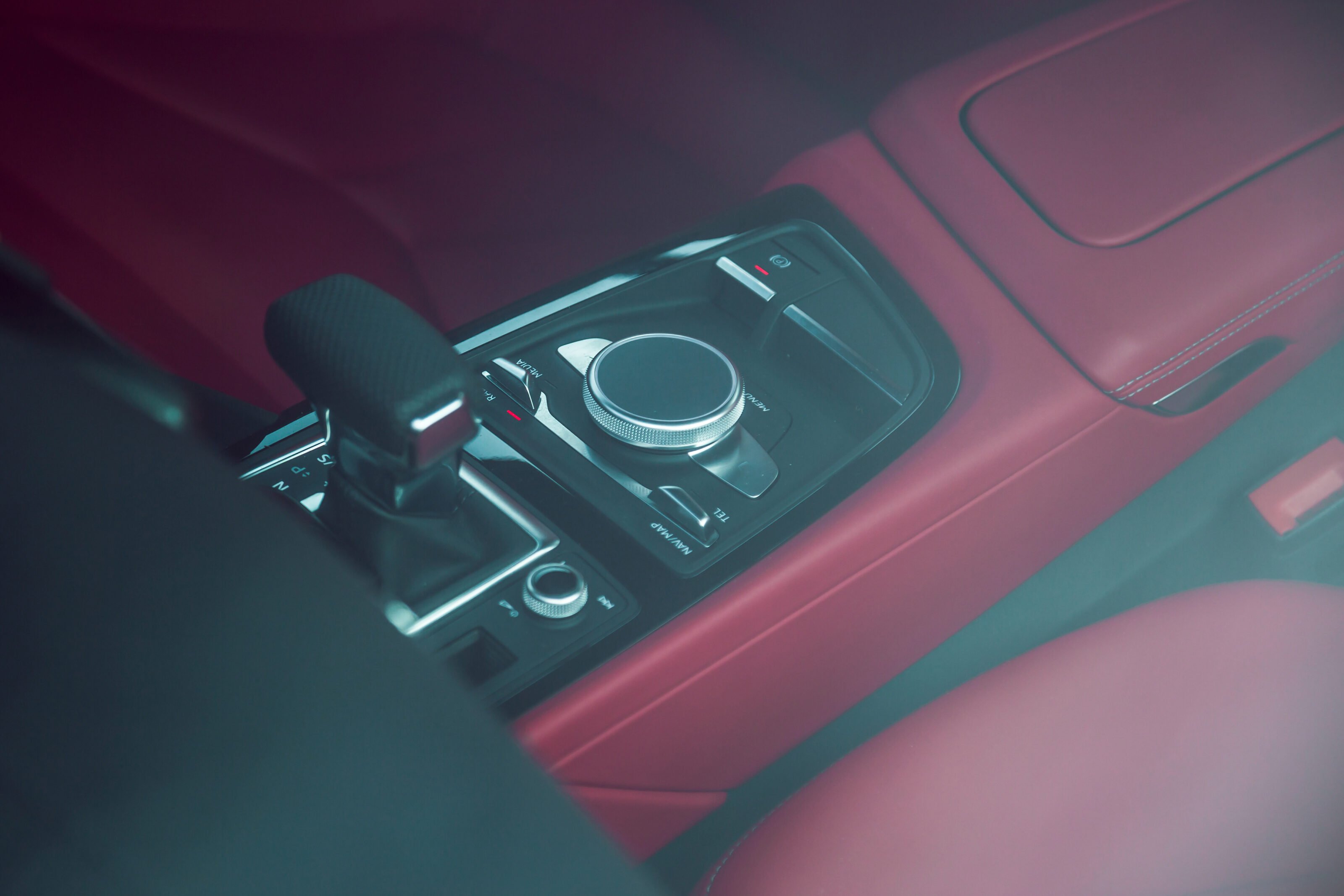
These factors, along with fairly un-PC fuel consumption of 12.0L/100km (ADR), will surely conspire to make the second-gen car’s tenure shorter than that of the first.
But as for its replacement? Audi Sport will only say that the R8 nameplate is “under review” and that “the e-tron GT will not replace the R8”. The official line goes on to say the R8 is the supercar icon in the Audi product portfolio, and “it’s clear we must rethink the concept of the sports car for the future, [so] a potential successor will no longer be a conventionally powered car. We’re currently discussing various concepts for a possible R8 successor, but no decision has been made.”
So that tends to hose down internet rumours that a plug-in hybrid R8 running a version of the 4.0-litre twin-turbo V8 could replace the V10. So will a successor go pure EV? There’s form here, with both first and current generations being developed with battery power.
Whichever way the company decides to go, the day the final V10 block emerges glowing from what was molten aluminium only minutes earlier in the Gyor foundry… well, a chapter of atmo supercar greatness will have closed for keeps.
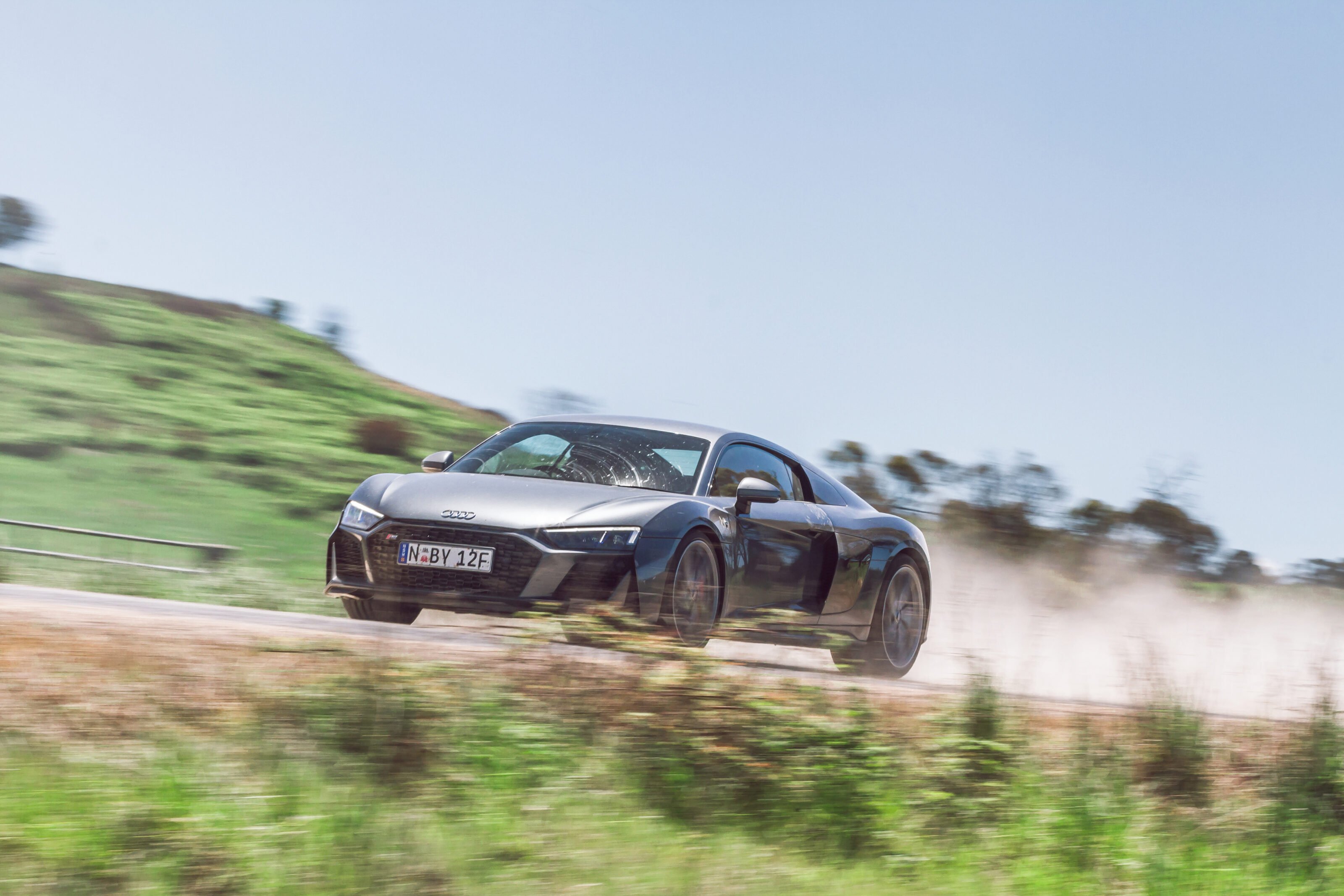
Ciao, bellow: Four rings crown the Raging Bull’s V10
In terms of engine architecture and core mechanicals, the R8’s V10 is identical to the unit that powers Lamborghini’s Huracan. The main components are manufactured at Audi’s engine plant in Gyor, Hungary, and both engines displace 5204cc within an aluminium block and heads. Breathing is via four valves per cylinder, operated by chain-driven double overhead camshafts, with continuously variable valve timing for both intake and exhaust.
Dry-sump lubrication allows the engine to be mounted nice and low. Updates for the second-generation R8 included revisions to the induction system, which features both port and directinjection, and a cylinder-on-demand system that disables five cylinders under light load. When wearing the Audi logo on top, the V10 is at its most potent in the V10 Performance variant, where it produces 456kW and 580Nm, and sounds like nothing else currently available… apart from a baby Lambo, of course.
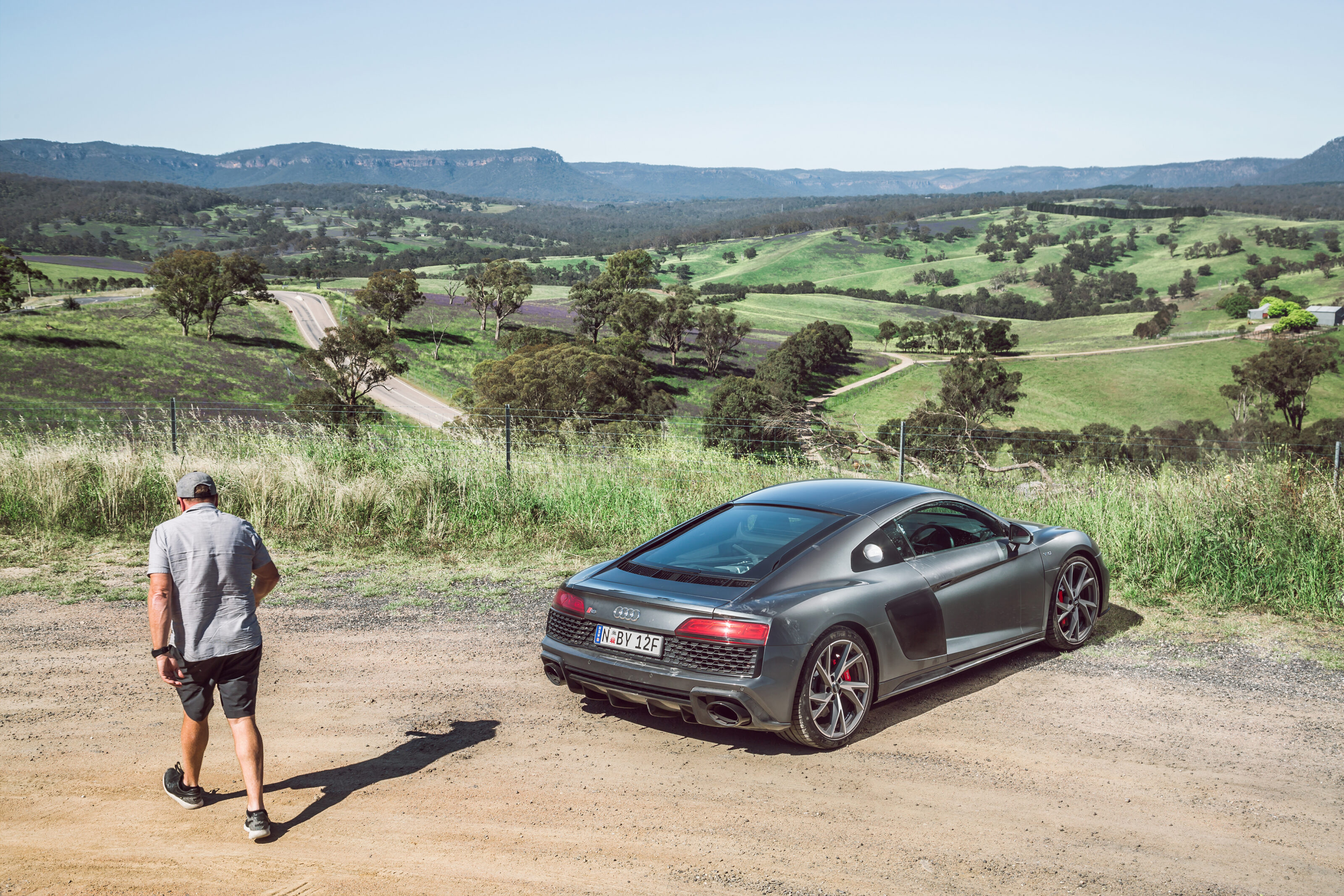
Audi R8 Coupe V10 RWD specifications
We recommend
-
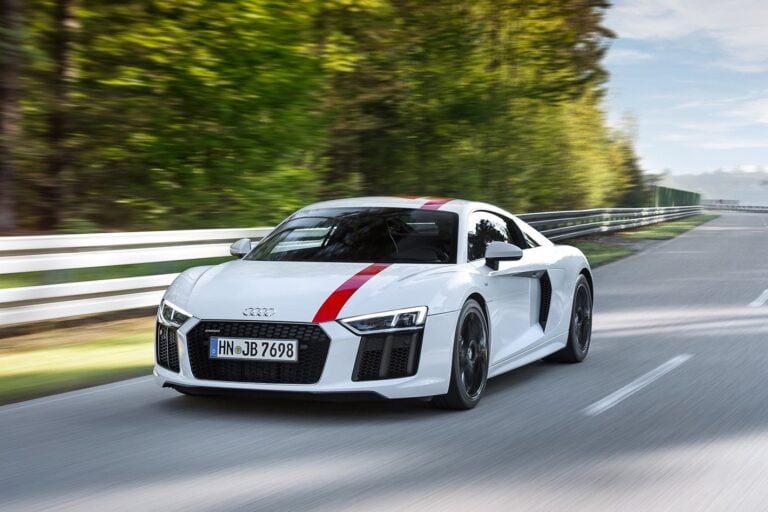 News
NewsAudi R8 will live on – but with no V10 in sight
Current Audi R8 will be the last of the pure petrol big bangers for the company, but Audi Sport boss confirms its ongoing future
-
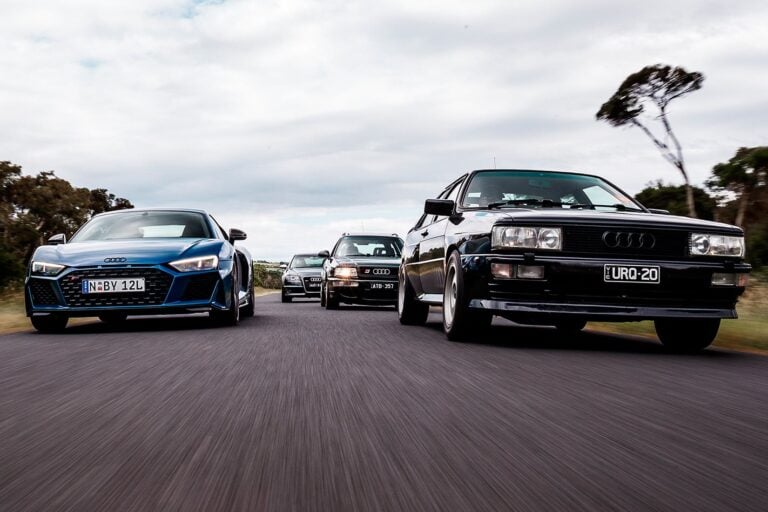 Features
FeaturesBest of Audi Quattro: Ur-Quattro v RS2 Avant v RS4 v R8
For the first time in Australia, we gather the finest quattros from each of the four decades of production
-
 Reviews
Reviews2020 Audi R8 V10 Performance review
Just the right amount of reheat extends the life of one unforgettable car


